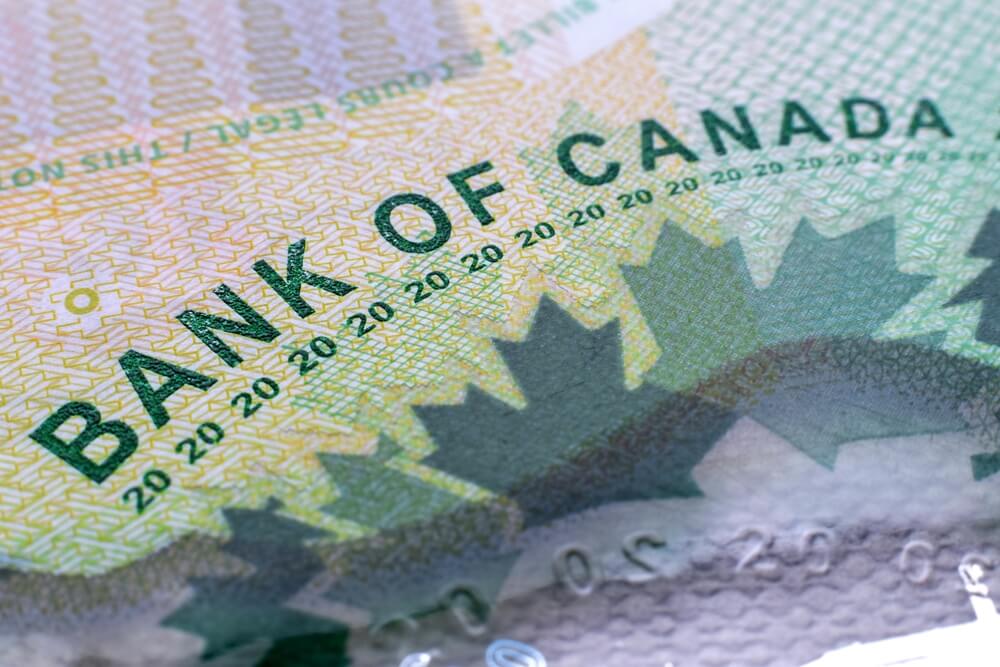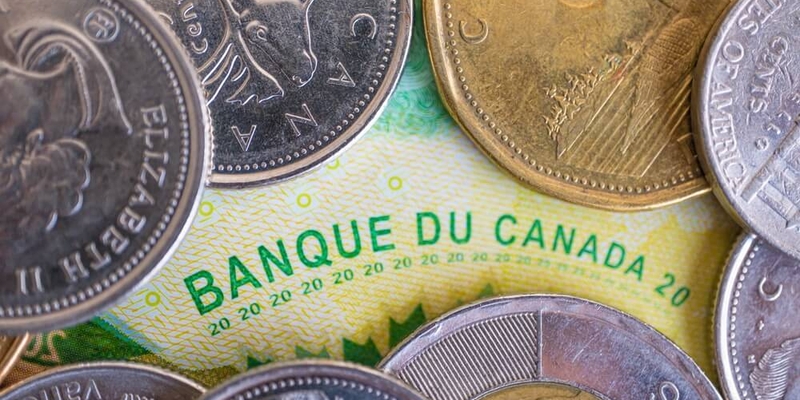Flood Insurance in Canada
Everything you need to know about flood insurance in Canada.
Compare flood insurance quotes from providers you trust
Jump straight to:
- About flood insurance in Canada
- Why flood insurance matters (especially today)
- What is the difference between water damage, overland water, sewer back-up and tidal flooding?
- What are the different kinds of water damage covered by my standard home insurance policy?
- What types of water damage are not covered by home insurance?
- Flood insurance coverage checklist
- How can I prepare for flood-related damages?
- Government assistance for homeowners without adequate flood insurance
- Frequently asked questions about flood insurance in Canada
About flood insurance in Canada
Flood insurance can be a nebulous term in the home insurance industry, depending on who you ask. If you think that it’s protection against all kinds of water damage – whether it’s coming from a leaky pipe, an overflowing river or a backed-up toilet – you’d be wrong.
The truth is, all-in-one flood insurance doesn’t exist in Canada. Instead, what you get is three types of water damage protection (two of which are often excluded from standard policies):
- Water damage: Protection from water sources located on your property (inside and outside), such as indoor plumbing, air conditioning, heating, sprinklers and other fixtures or appliances. This coverage is included in most standard home insurance policies.
- Overland water or inland flood: This coverage is optional. It protects your home from floods produced by external sources like ponds, rivers, streams, lakes and other bodies of water that overflow onto dry land. It also protects your home from floods caused by heavy rains or melting snow (for instance, when rainwater seeps into your basement).
- Sewer back-up: This protects your home from water coming from backed-up toilets, water drains and sewage systems. Basically, if sewer water is involved, this coverage will have your back. It is optional and often paired with overland water.
When buying a home insurance policy, make sure you’re clear on what you’re paying for. ‘Water damage’ may sound like comprehensive flood protection, but it isn’t. If anything seems unclear, consult with your insurer to gain clarity. Their nomenclature may differ from what’s listed here, but the overall protections should be the same.
It’s also worth noting that most Canadian insurers do not offer protection against coastal flooding (also known as ‘storm surges’) – caused by abnormally high sea water levels. This isn’t to say that Canadian homes are not at risk of coastal flooding, however. In fact, according to a recent study, more than 3.9 million Canadians live in areas that might be impacted by coastal flooding by the end of the century. If you think your home is at risk, learn more about coastal flooding from the Government of Canada.
Why flood insurance matters (especially today)
Floods are a growing risk for many Canadians. In 2024, for instance, flooding in Toronto and other parts of southern Ontario cost $940 million in insured damage, according to the Insurance Bureau of Canada (IBC). In Quebec, flooding cost a whopping $2.5 billion that year. In 2023, Nova Scotia floods cost the province $170 million in insured damage.
In fact, total insured losses from flooding cost the country close to $800 million per year over the last decade.
According to the Canadian Climate Institute, extreme rainfall events, which currently occur every 20 years in Canada, could occur every five years by the end of the century.
IBC estimates that there are over 1.5 million high-risk households that cannot even obtain affordable flood insurance (something you can try to remedy by comparing quotes here on RATESDOTCA).
Overall, flood insurance has never been more important, so if you can afford it, it might be worth purchasing – especially if you live in an area where flooding is a real risk.
What is the difference between water damage, overland water, sewer back-up and tidal flooding?
| Overland water | Water damage | Sewer back-up | Coastal flooding | |
|---|---|---|---|---|
| What is covered? | Damage resulting from bodies of water such as lakes, rivers or oceans overflowing onto dry land, due to a natural disaster.
Damage from rainwater and spring thaws that seep in and flood your home. | Water damage from sources inside the home, such as a burst pipe, leaky dishwasher or a malfunctioning sprinkler. | Water damage caused by the back-up of freshwater or sewage from a septic system or sump pump. | Water damage due to a flood caused by a body of saltwater, such as a tidal wave or a tsunami. |
| Is it included in a standard home insurance policy? | No. | Yes. | No. | No. |
| Is it covered in Canada? | Yes. | Yes. | Yes. | No. |
What are the different kinds of water damage covered by my standard home insurance policy?
Here are the types of water damage that your standard home insurance policy should cover:
- Appliance or fixture malfunctions. Like a washing machine, dishwasher or a toilet overflow (if caused by sewer backup) on your property. The repairs to the appliances and the damage would be covered if it was sudden or accidental.
- Burst pipes. Flooding due to a faulty sprinkler/indoor plumbing, air conditioning/heating system ruptures or a broken water main are all typically covered, as long as the damage is not a result of poor maintenance (e.g., frozen pipes).
- Roof leaks. Leaks on the roof due to causes other than wear and tear will be covered. If your roof is over 10 years old, you may not receive coverage. It is always wise to consult with your insurance provider to better understand the specifics.
- Ice damming. This is a ridge of ice that forms at the edge of a roof and prevents melting snow and ice from draining off. This type of water damage is covered under most basic home insurance policies.
What are the types of water damage covered via home insurance add-ons?
What you won’t find on most standard home insurance policies is coverage for damage coming from water sources outside your home. This is one of the biggest sources of confusion for many home insurance policyholders. When people think of ‘water damage,’ they instantly imagine a standard flood (e.g., coming from an overflowing river), but that’s not actually the case.
That said, if you do want to protect your home from other sources of water, you can do that – by purchasing these add-ons:
- Sewer back-up: This coverage protects homeowners in the event their home gets flooded due to a backed-up main sewage line. The sewage water starts flowing in a reverse direction and can potentially enter your home through your toilet or a drain. The blockage can be caused by all manner of things, including broken pipes, excessive rainwater, melting snow or even tree roots.
A backwater valve can prevent flood occurring because of sewer back-ups, so if you don’t want to pay for this coverage, you can install such a valve in your home. - Overland water: When people say ‘flood insurance,’ what they often mean is ‘overland water coverage.’ If your home gets flooded because of a lake, river, stream or pond overflowing onto dry land or excessive rainwater or thawing snow, this coverage will pay for repairing the damage. Basements in particular are highly susceptible to this type of flood. So, if you have a basement, we recommend buying this coverage.
It’s worth noting that you can only purchase this coverage if you don’t live in an area where overland flooding happens often (making it too high-risk to cover). Talk to your insurer to find out if this is the case.
What types of water damage are not covered by home insurance?
Certain kinds of water damage won’t get covered at all. Usually, when water damage is gradual, it won’t get covered. The reason for this is that gradual water damage is largely preventable and is therefore classified under ‘maintenance’ – which falls on the policyholder’s shoulders, not the insurer.
Here are some examples of water damage that’s unlikely to get covered by your insurer:
- Sump pump failure: If your sump pump doesn’t function properly due to poor maintenance, causing a flood, you won’t get covered. That said, sewer back-up coverage (which is an add-on) could cover if the sump pump failure is unexpected or sudden.
- Dripping ceiling: If you have a dripping ceiling, especially due to an old roof that hasn’t been repaired in years, you will not get coverage. This is especially true if you allow the leak to persist for a long time.
- Plumbing problems: If you have a clogged sink or toilet, which one day overflows and floods your home, you won’t get coverage. Making sure all the drains work properly is your responsibility as a homeowner.
- Frozen pipes: If your home is not properly heated in winter or your pipes are not properly insulated, they may burst and cause a flood. Given that this is preventable, insurance won’t cover the damage.
- Tidal flooding: If you live on a coastline, damage caused by rising sea levels will not get covered by most insurers in Canada. This includes tsunamis and tidal waves.
Note: If your home is vacant – meaning it remains unoccupied for more than 30 days – a water leak can occur while you’re away. Even if the leak is sudden, it may not be covered due to too much time passing between the leak occurring and you submitting the claim. It’s worth getting vacant home insurance in this scenario.
In general, the more time passes between claim submission and occurrence of water damage, the less likely the claim is to be accepted. So, be sure to contact your insurer as soon as the damage occurs. Don’t wait.
Flood insurance coverage checklist
| Type of damage | Covered? | Type of coverage | Exclusions |
|---|---|---|---|
| Sudden bursting of pipes; Plumbing; Water main breaks; Freezing of indoor plumbing; Overflowing or leaking appliances | Yes | Standard home insurance | Frozen pipes in a vacant home left uninsulated; Flooding due to poor insulation; Wear and tear; Rust, or corrosion; Slow deterioration |
| Overland flood damage caused by a large body of freshwater that flows over dry land (caused by snow melts, rainfall, etc.) and then enters your home through doors, windows or cracks | Yes | Overland water insurance (add-on) | Overland flood damage due to a dam disaster, or saltwater flooding due to tidal flooding; Earthquakes, landslides, or tsunamis; Damage caused by rising groundwater |
| Flood damage if you live in a known, high-risk flood plain | May not be covered | Check with your provider | Home located within 100 metres of flowing water |
| Damage or flooding caused by wastewater that backs up through sewers or municipal septic systems | Yes | Sewer back-up coverage (add-on) | Sewer back-ups caused by exterior drains at the bottom of your window wells, sump pump power failure |
| Freshwater flooding in your toilets, basement, or drains due to a storm sewer back-up | Yes | Sewer back-up coverage (add-on) | Depending on your provider, sewer back-ups caused by exterior drains at the bottom of your window wells and sump pump power failure may not be covered. |
| Damage to vehicles due to flooding and rising water by rain, hailstorms, thunderstorms and lightning; Sewer line back-up | Yes; under auto insurance | Comprehensive or ‘all perils’ coverage (under auto insurance) | Water damage due to leaving a window open, or general negligence |
| Damage to vehicles due to falling trees, branches or other objects during a natural disaster | Yes; under auto insurance | Comprehensive or ‘all perils’ coverage (under auto insurance) | Water damage due to leaving a window open, or general negligence |
Even if you have purchased the required coverages, these tips we have gathered from the Insurance Bureau of Canada will help minimize any potential water damage:
Keep track of your stuff
- Keep a regularly updated inventory of important things in your home.
- Make sure that any important documents, irreplaceable paperwork, and photographs are stored in a space where they are less prone to damage (for example: not in your basement).
Plan for when you’re away
- If you have to be away from home for more than three days, have someone you trust to check in daily, ensuring that the plumbing is draining, and the heat is on.
- If you’re going away for a long period of time, it is recommended you let your insurance provider know.
Implement flood preventions
- Install backflow/backwater valves or plugs for your toilets and drains to prevent sewage back-up in your home*.
- Install one or more sump pumps with back-up batteries.
- Install plastic window well covers.
- Make sure that you extend your downspouts at least six feet, to have the rainwater drain away from your home (keep your neighbouring houses in mind!) toward the street or a back lane.
- Use a rain barrel to help collect roof runoff.
- Consider raising large appliances like furnaces, heaters, ad electrical panels up on wood or cement blocks.
*Check with your municipality before installing a backflow valve; they provide subsidies on these valves which are otherwise expensive.
Conduct basic maintenance
- Ensure all floor drains are clear of obstructions.
- Ensure there is proper grading around your lot on your property to allow water to drain away from basement walls.
- Maintain your sidewalks, patios, decks and driveways, and check to make sure they aren’t allowing water to drain towards your home.
- Prevent soil erosion by landscaping your yard and lawns with plants and vegetation. Always clear snow away from your home’s foundation.
Government assistance for homeowners without adequate flood insurance
If you are unable to obtain sufficient overland water coverage due to living in a high-risk area, you can look to your local government for protection.
Ontario has a Disaster Recovery Assistance for Ontarians (DRAO) program, which can help you recover costs following a natural disaster (such as an overland flood). It’s applicable if the damage is sudden or unexpected.
If eligible, DRAO can reimburse you for:
- Clean-up costs
- Repair or replacement costs (for essential property)
- Emergency expenses like evacuation travel costs
Additional details
- Coverage limit is $250,000 per application.
- Coverage is subject to a $500 deductible (though low-income households may be exempt).
- Coverage reimburses up to 90% of total eligible costs, with limits on emergency expenses, household appliance and furnishings.
Consult the Government of Canada for more information on disaster assistance in other provinces.
Recent home insurance quotes

Recent home Insurance Quote from Barrie, ON
Semi-detached 1,166 sq ft
July 23, 2025
Cheapest Quote
$ 88 / month
$ 1,056 / yearAverage Quote
$ 195 / month
$ 2,345 / yearSavings
$ 107 / month
$ 1,284 / year
55 %
Recent home Insurance Quote from Windsor, ON
Semi-detached 2,464 sq ft
July 23, 2025
Cheapest Quote
$ 181 / month
$ 2,173 / yearAverage Quote
$ 431 / month
$ 5,177 / yearSavings
$ 250 / month
$ 3,000 / year
58 %
Recent home Insurance Quote from Newmarket, ON
Detached 2,920 sq ft
July 23, 2025
Cheapest Quote
$ 126 / month
$ 1,512 / yearAverage Quote
$ 186 / month
$ 2,229 / yearSavings
$ 60 / month
$ 720 / year
32 %
Home insurance quotes are compared from Apollo Insurance, CAA, Economical Insurance, Pembridge, Square One Insurance, and SGI
How to get flood insurance on RATESDOTCA
Ready to compare quotes and save?
Tell us about your home
Answer a few basic questions about your home. It won't take long!
Compare your quotes
See quotes from top insurance companies side by side.
Choose the right coverage
Find the right protection for your home and everything in it.
Secure your rate
Connect with the provider and secure your rate.
What people say about our quotes

Based on 6,450 reviews

Fast efficient and fair
Quick quotes. Great rates. Easy to process
Trinity

Comparing Travel Insurance …
This was the only site I could find that allowed me to compare different travel insurance options. I particularly liked the ability to look at sample documents.
Toronto

Amazing
Very helpful and easy to use
Safe travels

Easy quick selection of rates
Easy quick selection of rates
J K

Great help in finding the best rate!
Great help in finding the best rate! Thanks a lot!
Ruthielyn opina

I like how I can quickly I can select…
I like how I can quickly I can select travel insurance. The web site had an issue earlier but seemed to correct itself.
Dennis
Frequently asked questions about flood insurance in Canada
Got more questions about flood insurance in Canada? We got you covered.
I rent my home. Do I need flood insurance?
If you rent an apartment in a flood plain, or a basement apartment, you may need flood insurance. Your landlord will typically have property/landlord insurance, which will insure the building and its structure, but the safety of your contents (like your furniture, electronics, clothes and other belongings inside your rental home) is on you and this is what tenant insurance is for.
A basic renters’ insurance does not automatically provide coverage against flood damage. However, you can buy this coverage as an add-on into your existing tenant insurance policy. Water damage like sudden leaks and pipe bursts will typically be covered in your standard tenant insurance.
If you feel like your home is prone to rainstorms or flood, don’t wait till the water comes up to consider flood insurance. Talk to your representative today to see if you should add this extra coverage to your insurance policy.
Why is there no coverage for tidal waves or tsunamis?
Since tidal waves, tsunamis, or breakage of dams are all risks that affect only a small percentage of the population living in close proximity to coastal areas and other regions, the cost of this coverage would be exponentially high against the risk.
Is water damage to my car covered under flood insurance?
No, coverage for your vehicle is not covered under home insurance flood coverage.
That said, repairs are typically covered if you have comprehensive coverage on your auto insurance policy, or if you have purchased an all-perils coverage. It is not included in your basic mandatory auto insurance coverage.
Since water that gets into your car during a sudden storm, overflow or flooding can cause severe damage to the vehicle’s engine, it’s a good idea to review your car insurance policy to find out what is and is not covered.
Can I buy flood insurance?
Generally, yes, you can. While water damage caused by sources located on your property, such as pipes or appliances, is covered by standard home insurance, damage from overland flooding is not.
Overland flooding refers to bodies of water like lakes, rivers, streams or ponds overflowing onto dry land. Overland water (also known as inland flooding) coverage will protect you from this type of water damage, in addition to damage caused by melting snow or excessive rainwater. You can also purchase sewer back-up coverage, either in addition to overland water protection or separately.
Do note that if you live in an area where the risk of overland flooding is high, you may not be able to purchase this coverage, so check with your insurer to make sure.
What is the best flood insurance in Canada?
Each insurance policy is different, and when it comes to flood insurance, you need a policy that is unique to your needs. This is why there is no one best type of flood insurance, as everyone’s situation is different.
When shopping for home insurance quotes on RATESDOTCA, you can get rates from multiple top providers at once and compare them side by side. You can also talk to these providers to ensure you have all the coverage you need, come rain or hail.
Not every provider offers overland flooding insurance, and coverages vary vastly, which is why you should get quotes from multiple insurers to make sure you are getting the best rates for your needs.
Can I be denied flood insurance?
Yes, you can be denied flood insurance if you misrepresent your situation. Any damage caused by negligence or poor maintenance of your property can cause your claims to be denied. Some of these instances include:
- Flooding due to frozen pipes that have not been insulated
- Leaving your home vacant for a long period of time without checking in to mitigate potential damages
- Water damage caused by a roof that requires replacing
Your insurance is there to cover you for any sudden, accidental, or unexpected water/flood damage caused by breakdowns, blockages, clogging, or natural disasters, not to make up for your negligence.
In some cases, older homes that stand in a flood plain cannot be insured because the risk of flooding and damage is exponentially high. Homeowners in such situations can still be assisted with their claims by the Disaster Financial Assistance Arrangements program funded by the federal government but distributed at a provincial government level.
I live in a condo. Do I need flood insurance?
That depends on whether or not your condo unit is at risk in the event of flooding, such as if it is on the first floor or a lower unit. Whether you rent or own, you might want to consider adding flood insurance, including sewer system backup coverage, to your policy to ensure your belongings are protected.









